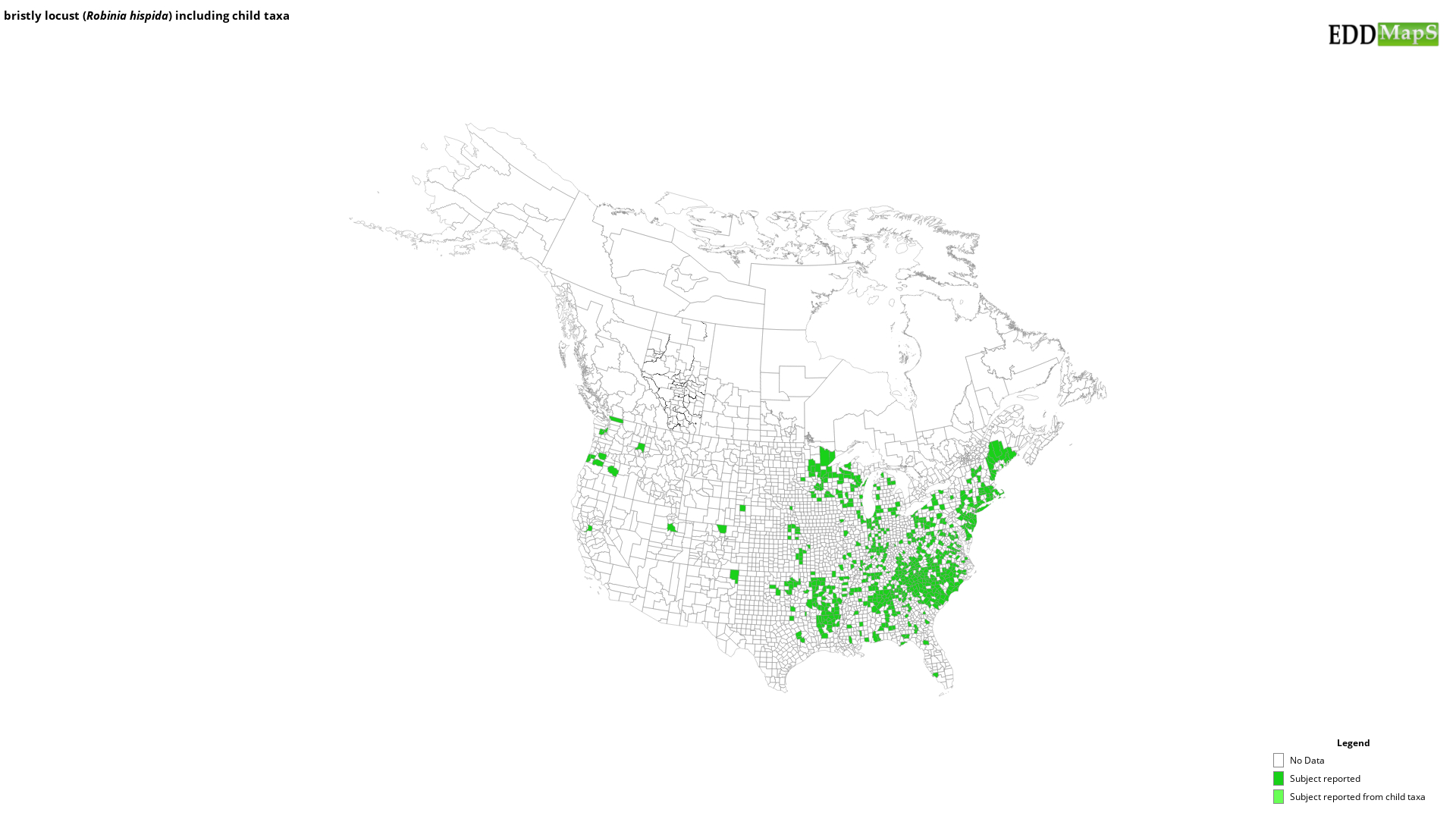bristly locust
(Robinia hispida)
This species is Native and Introduced across its range in the United States
Appearance
Robinia hispida is a deciduous shrub, to 8 ft. The multiple stems are erect and covered with dense bristles. Caution: All parts of this plant are poisonous. It is native to the southeastern United States.
Foliage
The alternate, pinnately compound leaves have 7 - 19 leaflets about 1.5-2 in. long. They are densely hairy with smooth edges. Most leaves have a pair of long spines at their base.
Flowers
The dark to light pink pea like flowers are clustered in the leaf axils. The flowers bloom from May through June.
Fruit
The thin seed pods are 2-4 in. long and densely covered with bristly hairs.
Ecological Threat
Robinia hispida was planted for erosion control and can be found in disturbed areas such as old fields and along roadsides. It prefers full sun.
Selected Images
Maps
EDDMapS Distribution - This map is incomplete and is based only on current site and county level reports made by experts, herbaria, and literature. For more information, visit www.eddmaps.org
State Lists - This map identifies those states that have this species on their invasive species list or law.
Invasive Listing Sources
- City of Ann Arbor Michigan Parks and Recreation
- John Randall, The Nature Conservancy, Survey of TNC Preserves, 1995.
- New Jersey Invasive Species Strike Team 2017 Invasive Species List
- Reichard, Sarah. 1994. Assessing the potential of invasiveness in woody plants introduced in North America. University of Washington Ph.D. dissertation.
- WeedUS - Database of Plants Invading Natural Areas in the United States
- Wisconsin Noxious Weeds
- Wisconsin's Invasive species rule – NR 40
Taxonomic Rank
| Domain: Eukarya |
| Kingdom: Plantae |
| Phylum: Magnoliophyta |
| Class: Magnoliopsida |
| Superorder: Rosanae |
| Order: Fabales |
| Family: Fabaceae |
| Genus: Robinia |
| Robinia hispida |
References
Common Name Reference: USDA, NRCS. 2010. The PLANTS Database. National Plant Data Center, Baton Rouge, LA, USA.
Scientific Name Reference: USDA, NRCS. 2010. The PLANTS Database. National Plant Data Center, Baton Rouge, LA, USA.


